Gujarat Board GSEB Solutions Class 7 Social Science Chapter 7 Consumer in the Market Textbook Exercise Important Questions and Answers, Notes Pdf.
Gujarat Board Textbook Solutions Class 7 Social Science Chapter 7 Consumer in the Market
GSEB Class 7 Social Science Consumer in the Market Textbook Questions and Answers
Let us think.
Question 1.
Given below are different attractive advertisements of certain products that are purchased from the market. Among these, are there any that are really beneficial to the consumers?
15gm. more on every 500 gm. pack.
Win gifts worth Rs. 10 lakh on the purchase of Rs. 1000.
Buy shoes worth Rs. 2000 and get another pair for Rs. 500 only.
Answer:
- The first advertisement assures that one will get 15 gm additional. Thus, this offer is surely beneficial.
- The second is purely based on luck and hence does not assure benefit.
- In the third advertisement, if a customer needs a second pair of shoes then the advertisement will benefit him. However, he buys only by getting attracted towards the advertisement, then he will not get the real benefit.
Question 2.
While purchasing a bottle of medicine and a packet of biscuits, which symbol or instruction would you look for? Why?
Answer:
We would look for mark of ISI on medicines and Agmark on biscuit packet.
These marks assure that the quality of the product is checked, verified and certified.
Question 3.
Take a packet of any product and note down the ingredients used.
Answer:
If the customer has a bill, then he can return the inferior /faulty product.
He can claim for his money wasted and also he can file a complaint in consumer court with the help of the bill.
Moreover, by giving us the bill the shopkeeper will have to pay tax to the government. This is beneficial for the entire country.
Question 4.
Find out the year when this book was printed.
Answer:
Publishers usually list the printing date on the inside cover. Look at the title page to see if you can find a date. On some books, usually newer ones, you can find a printing date right underneath the title.
This field is for noting the date the edition associated with the listed ISBN was published. Date published can most usually be found on the copyright page of a book.
That page will tell you when the work was copyrighted – and if the book is a first edition, the copyright date will be the same as the date published. If it is a later edition, the date will be different. Some books, not all, will list dates for subsequent publications somewhere on the copyright page. The last date listed is what should be used to fill in the date published.
If you know the book is a reprinting/reissue published later than the copyright date, but no other dates are given you can
(a) if the book already has a date published supplied by Ingram, leave it as is;
(b) research the publication date for the edition you have using Worldcat, Library of Congress, the author’s website or numerous other resources; or
(c) use the copyright date as the date published.
Example:
year: 2008
month: September
day: 22
Adding the month and day are optional. They should be included if known. Year is also technically optional, but it is strongly encouraged that a year always be included.
Question 5.
Why must we ask for a bill while purchasing a product?
Answer:
Tip
Consumers should be satisfied with the product they receive after they have invested their money on it. The government has sanctioned certain symbols or marks for the variety of products tested by them.
Explanation:
We must ask for the bill because the bill is required to be produced before the consumer court if consumer finds the product be fault for which he/she wants a file complaint. Bill also ensures that tax on the products has been paid to the government.
Question 6.
Discuss about the products given and the services provided. (You can add new names if required) Which rules of protection and guidance are lo be followed by the industrialists and traders?
1. LPG Cylinder
2. Theatre
3. Circus
4. Medicines
5. Edible oilc
6. Mandap for community marriages
7. Multi-Storeyed building
Answer:
1. LPG cylinder:
Cylinders should be properly weighed and sealed.
2. Theater, circus and mandap for marriage.
Proper fire fighting equipments should be installed.
Customer should get proper parking space.
3. Medicines and edible oil:
- These items should carry lSl mark.
- They should have expiry date or period.
- The products should mention the ingredients.
4. Multistoried building:
Lift, a backup lift and fire fighting system should be present.
Generator for power back-up should be present.
Read the questions given and conduct a survey on how much awareness there is in the consumers.
Put a tick against each question according to your responses. Always Sometimes Never
Question 1.
Do you ask fora bill when you buy something?
Answer:
The importance of a receipt is that it serves as documentation that the products and/or services has been paid for and the business transaction is complete. The vendor and the customer can use the receipt as proof that the amount owed has been paid.
Question 2.
Have you kept your bills in a safe place?
Answer:
Safe Places to Save Your Money:
Both certificates of deposit (CDs) and U.S. government securities are relatively safe places to invest your money. Both of these options will offer you some return on your money, but if your first priority is keeping your money safe, you’ll likely want to prioritize a high degree of liquidity and relatively low fees above high returns.
Key Takeaways:
Savings accounts are a safe place to keep your money because all deposits made by consumers are guaranteed by the FDIC for bank accounts or the NCUA for credit union accounts.
Deposit insurance for savings accounts covers $250,000 per depositor, per institution, and per account ownership category.
Certificates of deposit (CDs) issued by banks and credit unions also carry deposit insurance.
U.S. government securities–such as Treasury notes, bills, and bonds–have historically been considered extremely safe because the U.S. government has never defaulted on its debt.
Question 3.
Have you ever complained when you felt that you were cheated by the trader?
Answer:
Your consumer rights:
You have the right to corn plain if something you’ve bought does not work, a service has not achieved the result that was agreed, something has not been delivered on time, or you’ve been misled by an advert.
Know your rights:
The Consumer Guarantees Act and the Fair Trading Act are consumer laws that help ensure:
you get the goods or services you pay for
what you get is of acceptable quality.
Information on consumer Laws:
It’s an offence to mislead a consumer about their contractuaL or legaL rights when they buy something.
Information on business obLigations.
Bad service and faulty goods:
If the service or product does not meet your expectations, you can:
ask for the job to be redone. cancel the service. payless money than was agreed
not payara.
Information on your consumer rights when buying products and services
Buying online:
Know your rights when you’re shopping online – and what to do if anything goes wrong.
Information on your rights when buying online Information on deLivery issues.
How to complain:
Find out the best way to complain to increase your chances of your problem being solved.
If you’re still not happy:
The Disputes Tribunal can take claims of up to $30,000 on faulty goods if the seller has refused to fix, refund or replace them.
Disputes Tribunal:
Complain if you think you were misled by advertising for something you’ve bought or services you’ve received.
Making a complaint to the Commerce Commission.
Question 4.
Did you succeed in telling the trader that you were cheated by him?
Answer:
Day traders rarely hold positions overnight and attempt to profit from intraday price moves and trends. Day trading is risky but potentially lucrative for those that achieve success. Experienced day traders tend to take their job seriously, remaining disciplined, and sticking with their strategy.
3 Insanely Successful Stock Market Investors in India
1. Rakesh Jhunjhunwala
2. Radhakishan Damani (RK Damani)
3. Ramesh Damani
Bonus: Few Other Popular Stock Market Investors in India
4. Raamdeo Agrawal
5. Other Popular Indian Stock Investors
1. Rakesh Jhunjhunwala. Rakesh Jhunjhunwala, also known as “The Big Bull’, is one of the most renowned and successful stock market investors in India. He has made a great fortune by trading and investing in stocks, which is an inspiration for all those who want to succeed in the Indian Stock Market.
2. Radhakishan Damani (RK Damani):
Net worth: 15.4 Billion USD (Feb 2021)
Born: January 1954
Occupation: Investor, Stockbroker, Trader, and the Founder & Promoter of Dmart
According to Forbes 2020 Rich List, RK Damani is the 4th Richest Person in India.
Radhakishan Damani, also known as ‘Mr. White and White’, because of his simple dressing of White shirt and white trousers, is the richest stock market Investor in India and owner of D-mart. Coincidently, he is also the mentor of billionaire investor Rakesh Jhunjhunwala. RK Damani is known for his low profile and he rarely makes an appearance in public events or press conferences.
Quick Fact, On 21st March 2017 i.e. the listing day of Avenue supermart (parent company of D-mart), the stock price rose more than double, from the offer price of Rs 299 and ended up 116% upwards to Rs 648. In the IPO of Avenue Supermart, RK Damani made around Rs 6100 crores in just two days. RK Damani owns around 52% stake in Avenue Supermarts, and Bright Star Investments – his investment company, holds another 16% stake.
RK’s journey in the Indian stock market is truly inspiring. He was not always actively involved in the stock market. He started his career as a trader in ball bearing, with no intentions to enter the stock market. However, his future has something else planned for him. RK Damani entered the stock market only at an age of 32.
At an age of 32, post his father’s death, RK was forced to close down his ball-bearing business and had to join his brother in the family stockbroking business, which was inherited from their father.
RK Damani had no idea of what to do in the stock market at that time. His knowledge of the stock market was very limited. He made many mistakes initially by speculating the stock prices. However, he soon understood that the market is heaven for those who are serious about it and want to make a great fortune in life.
3. Ramesh Damani:
Net worth: Around Rs 1,100 Crores
Education: HR College, Mumbai (Bachelor’s degree in Commerce)
California State University (Master’s Degree in Business Administration)
Occupation – Founder of Ramesh s Damani Finance Pvt Ltd
“I learned that just because a stock doubles, it is not a reason to sell it.”- Ramesh Damani
Ramesh Damani, the investment guru and one of the most successful stock market investors in India, started his journey to riches in 1990s when Sensex was 600 points. He holds a bachelor’s degree in commerce from HR College, Mumbai, and a master’s degree in Business Administration from California State University.
Ramesh Damani works at privately owned Ramesh s Damani Finance Pvt Ltd. The son of a successful stock investor, Ramesh Damani became a member of the Bombay Stock Exchange(BSE) in 1989. Initially, Ramesh planned his career as a stockbroker. However, later he started enjoying picking winning stocks and switched to become a long-term investor.
Ramesh Damani’s first famous investment was ‘Infosys’. Coming from a techie background in the US, he knew that Infosys has great future potentials. Therefore, when Infosys became public in 1993, he invested Rs 10 lakhs in it. By 1999, this investment has given him more than 100 times return.
The investment philosophy of Ramesh Damani is easy and simple to understand. He is a long-term investor and suggests not to invest for short-term gain. Further, he advises everyone to make an exit strategy clear before making an investment in any stock. He further adds that the economy of a market is hard to predict; however if you have researched the stock carefully, and had made a good strategy, then you can easily make fortunes in the stock market.
Question 5.
Do you always tell yourself that it is your bad luck and that you are always cheated by people?
Answer:
“There’s a multitude of reasons why people cheat,” says Kenneth Paul Rosenberg, M.D., a psychiatrist and author of Infidelity: Why Men and Women Cheat. According to a 2017 article published in the Journal of Sex Research, explanations for infidelity often dip into three main categories: personal problems, beliefs, or characteristics; issues with your partner or the relationship as a whole; and situational factors like easy access to dating websites, long business trips, or liquid courage.
1. The relationship wasn’t fulfilling anymore:
One common reason for cheating is that the partnership isn’t satisfying, says Ashley E. Thompson, PhD, an associate psychology professor who researches infidelity at the University of Minnesota in Duluth. If you’ve grown distant, don’t have anything to talk about, or can’t remember the last time you had sex, you or your partner may end up looking for connections outside of the relationship rather than trying to fix problems at home.
2. They didn’t think through the consequences:
The saying, “Once a cheater, always a cheater,” by no means applies to infidels across the board, but it might have a grain of truth, says Thompson. “There are certain personality characteristics that are indicative of folks who commit infidelity,” she says. In particular, people who are not so self-disciplined may be more apt to say they were “swept away by the moment” due to factors like mood lighting at the bar or too much to drink when, in fact, their own impulsiveness and penchant for risk-taking could be to blame.
3. They got a rush out of it:
“A fair number of people cheat just because they can,” says Dr. Rosenberg. Contrary to the stories you often hear about discontent spouses, a partner who cheats might be relatively happy with their primary relationship but their partner isn’t open to a non-monogamous arrangement, they want the best of both worlds, or they get a thrill from secretly pursuing new hookups.
4. They suffered from low self-esteem:
Often, there are conscious reasons for cheating (like: “You don’t give me enough attention!”) as well as more unconscious reasons (such as problems dealing with difficult emotions or trauma), says Gilza Fort Martínez, a Miami-based licensed family and marriage therapist specializing in life transitions and conflict resolution. Over half of people who cheat say self-esteem has something to do with it.
If a partner isn’t feeling good about themselves and isn’t addressing that in a healthy, productive way, such as therapy, they’re more likely to end up in a relationship wracked with negativity and fighting. As a result, they might seek out someone else to boost their shaky ego or establish a sense of control over their lives—even if it’s ultimately self-destructive.
5. They craved sexual variety:
It’s normal to find other people attractive, have sexual fantasies, or want multiple sexual and/or romantic partners in your life. But when you act on those desires without your partner’s knowledge and enthusiastic consent, you get into tricky territory.
Some people tend to be more open to sex outside of their primary relationship and could end up cheating if they don’t communicate their needs to their partner. A better alternative? Just be honest with yourself and your partner about what you want, says Dr. Rosenberg. These days, you do have options like ethical non-monogamy, polyamory, or an open relationship.
6. They wanted revenge:
If you’ve ever been betrayed by a partner, you know that fury often comes along with anguish and confusion. The desire for revenge is another common motive for infidelity, says Thompson. While many cheaters will do everything they can to avoid getting caught, others might want their partner to find out in order to “get back at them” for having an affair or treating them poorly. Case in point: Nearly half of people who cheat say anger factored into their reasoning, according to one study.
7. The relationship wasn’t healthy:
While there’s little research on this, some study participants’ stories suggest infidelity could actually serve as “an adaptive mechanism by which to escape” for someone in a toxic or abusive relationship, says Thompson.
If you’re unable to end a bad relationship or want to but can’t quite take that step yet, having an affair with someone else who treats you well could serve as a reminder that you’re entitled to a healthy, happy, and fulfilling relationship-and give you the courage to get out, confirms Tammy Nelson, PhD, a sexologist, licensed relationship therapist, and author of When You’re the One Who Cheats.
8. They weren’t in love anymore:
Of all the reasons for cheating, the most painful and common one is simply a lack of love. At the beginning of a relationship, just grazing your partner’s hand can get your heart thumping, let alone seeing their clothes come off. “But that kind of romantic love lasts a couple of years if you’re lucky,” says Dr. Rosenberg. Because we’re “passion-bound creatures,” fidelity isn’t always easy when that initial spark fades, he says.
“Just because you’re married doesn’t mean you’re immune to falling in love with another person,” adds Nelson. Sometimes, as heartbreaking as it can be, relationships have expiration dates. While it’s best to end a partnership with integrity before moving on, when someone begins to feel the heat with another person, they may cheat before they can admit that their initial partnership has truly fizzled out.
Question 6.
Do you ever look for the ISI mark or any other symbol or expiry date?
Answer:
Certification Marks issued for different products in India:
Government of India has created some standards for almost every product to protect the economic interests of all citizens. These standards are like AGMARK for agricultural products, ISI mark for electric products, BIS mark for gold ornaments and “FPO mark for all the processed fruit products. This article will explain some of the most essential certification marks to protect the consumer rights.
Government of India has created some standards for almost every product to protect the economic interests of all citizens. These standards are like “AGMARK” for agricultural products, ISI mark for electric products, BIS mark for gold ornaments and “FPO mark” for all the “processed fruit products”. This article will explain some of the most essential certification marks to protect the consumer rights.
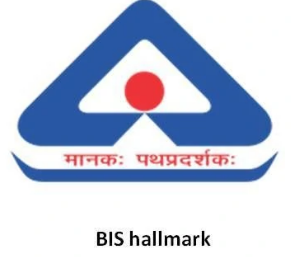
1. BIS Hallmark:
Who issues it: Bureau of Indian Standards
For which products: Gold and silver jewellery
Applicable since: It is applicable for gold since April 2000 and for silver since 2005.
To judge the purity of the gold ornaments, these numbers are written on the jewellery;
I. For 23-carat gold, you can find 958 numbers stamped on jewellery.
II.For 22 carats 916
III. For 21 carats 875
IV. For 18 carats 750
V. For 17 carats 708
VI. For 14 carats 585
VII. For 9 carats 375
2. AGMARK:
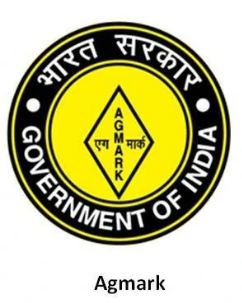
Who Issues: Directorate of Marketing and Inspection of the Government of India
Which products: Agricultural Products
Applicable Since: 1937 (amended in 1986)
Other Facts:
AGMARK is a certification mark employed on agricultural products in India, assuring that they conform to a set of standards.
The AGMARK is legally enforced in India by the Agricultural Produce (Grading and Marking) Act of 1937 (and amended in 1986). The present AGMARK standards cover quality guidelines for 213 different commodities spanning a variety of Pulses, Cereals, Essential Oils, Vegetable Oils, Fruits & Vegetables, and semi-processed products like Vermicelli. Apart from “Central AGMARK Lab, Nagpur” in India, there are also state-owned AGMARK laboratories in 11 nodal cities of the country.
3. ISI Mark:
Who issues: Bureau of Indian Standards (BIS)
Which products: Industrial products
Effective since: 1955

Other Facts:
ISI Mark is a certification mark for industrial products in India. The mark certifies that a product confirms to the Indian Standards, mentioned as IS: XXXX on the top of the mark. So if you want to purchase an electronic item/industrial items from the market then make sure that it has ISI mark on it.
4. FPO Mark:
Who issues: Ministry of Food Processing
For which products: processed fruit products
Effective since: 1955
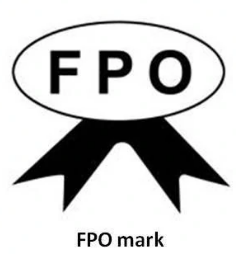
Other facts:
This mark is a certification mark mandatory for all the “processed fruit products” in India. This mark is applicable on food such as packaged fruit beverages, fruit-jams crushes and squashes, pickles, dehydrated fruits, products and fruits extracts, following the food safety and standard act of 2006.
FPO mark proves that this product has been manufactured in a clean ‘food safe’ environment and is not harmful for people’s health.
5. Non-Polluting Vehicle Mark:
It is a mandatory certification mark required on all new motor vehicles sold in India. The mark certifies that the motor vehicle conforms to the relevant version of Bharat Stage Emission Standards. The validity of this certificate is limited for one year only.

6. India Organic:
For which products: Organically farmed food products
Effective since: 2000
image source:swarnabhoomiorganic.com
Other facts: This certificate is required for farmed products produced in India. The certificate mark certifies that an organic food product conforms to the national standard for organic products established in 2000.
7. Ecomark or Eco mark:
Who issues: Bureau of Indian Standard (BIS)
For which products: Eco friendly products
Effective since: 1991

Question 7.
If a products expiry date is nearing or there is just one month left, do you ever ask for the latest packed product?
Answer:
Best Before and Expiry Dates for Food and Drugs:
Most of us with gastrointestinal maladies such as IBD (Crohn’s disease or ulcerative colitis), reflux disease (GERD), IBS (Irritable Bowel Syndrome), or one of the myriad others, know from first-hand experience the price paid for ignoring warnings about taboo foods or inappropriate drug regimes. We may pay the price in pain, with increased lethargy, inadequate nutrient absorption, diarrhoea, fever, disorientation, and fatigue. These are the penalties for indulgence in the forbidden.
But what about those foods and medicines that are okay; the ones you need and that your body can handle? What can you be doing to ensure that these foods remain nutritious and safe, and that the drugs remain effective? Read the labels. Pay particular attention to the “best before” or “expiry” dates. These indicators of shelf life can help to safeguard your health and provide some assurance that okay will really be okay.
Food – “Best before” Date:
The durable life dating [“best before” date] of food products is defined by the Canadian Food and Drugs Act and Regulations.1 Durable life is the period, starting on the day a food is packaged for retail sale, that the food will retain its normal wholesomeness, palatability, and nutritional value when stored under conditions appropriate for that product. Dating information and instructions for proper storage are required on most foods, which have a shelf life of 90 days or less.
It is up to the manufacturers and retailers to determine the durable life of foods they manufacture and sell. The dating information they provide indicates quality not food safety.2 Any pre-packaged food product having a durable life of 90 days or less must have a durable life date on the label, expressed as the “best before” date, and instructions for proper storage. Look on the label for the statement “best before” coupled with the month and date, for example, best before OC 15. It may not say “best before” if there is an explanation of the significance of the durable life date somewhere else on the label. Expiry date is not a term used with food in Canada. The only exception is infant formula, which does carry an expiration date.
Products packaged at the retail store with a durable life of 90 days or less may be labeled with either a durable life date and any necessary storage instructions, or a packaging date and accompanying durable life information, on the label or on a poster next to the food. Fresh fruits and vegetables are exempt from this labeling but meat must follow the regulations.
The federal government’s Canadian Food Inspection Agency (CFIA) enforces the federal labeling requirements for pre-packaged foods under the Food and Drugs Act and the Consumer Packaging and Labeling Act. Among the basic labeling requirements for pre-packaged foods are the common name, net quantity, ingredients, “best before date”, and responsible party by or for whom the packaged food is manufactured or produced. Inspectors review food labels for accuracy, investigate complaints, and charge offenders.
Drugs – “Expiry” Date
For drugs and natural health products, an “expiry date” indicates the shelf life and the stability of the product. Read the label to make sure the expiry date hasn’t passed. Like foods, drugs and supplements should not be used after their expiry dates. Look for the DIN (Drug Identification Number) or GP (General Product) number, usually on the front label, which shows that the product was approved by Health Canada.
The Act and its regulations apply equally to the distribution by manufacturers of drug samples to medical professionals for use with patients. Samples may be distributed only when labelled in accordance with the Regulations. There has been an incorrect perception that the labelling requirements for a sample are less stringent than those required for other package sizes of prescription or non-prescription drugs. The lack of a clear guideline has created inconsistency in labelling. Health Canada has recently issued new guidelines to clarify these requirements.
Question 8.
Do you yourself weigh new gas cylinders or old newspapers before buying or selling them?
Answer:
1. When you buy some item, do you insist on a bill?
Always
2. Do you keep the bill carefully?
Always
3. If you realise that you have been tricked by the shopkeeper, have you bothered to complain to him?
Always
4. Have you been able to convince him that you’ve been cheated?
Always
5. Do you simply grumble to yourself reconciling that it is your fate that you are often being victimised so and it is nothing new?
Never
6. Do you look for ISI mark, expiry date etc?
Always
7. If the expiry date mentioned is just a month or so away, do you insist on a fresh packet?
Always
8. Do you weigh the new gas cylinder/old newspapers yourself before buying/selling?
Always
9. Do you raise an objection if a vegetable seller uses stones in place of the exact weight?
Always
10, Do excessively bright coloured vegetables arouse your suspicion?
Always
11. Are you brand-conscious?
Always
Question 9.
Do you ever oppose if the grocer keeps a stone in place of measuring weights?
Answer:
A scale or balance is a device to measure weight or mass.
Image result for Do you ever oppose if the grocer keeps a stone in place of measuring weights?
The stone or stone weight (abbreviation: st.) is an English and imperial unit of mass equal to 14 pounds (approximately 6.35 kg). The stone continues in customary use in the United Kingdom and Ireland for body weight.
Question 10.
Do you ever doubt the quality of vegetables if they are too glossy?
Answer:
Vegetables that are fruits and fruits that are actually vegetables! We finally have the answer:
Fruit or vegetable? Know it all:
Ever stopped in the middle of making a fruit salad, to think if what you are chopping actually qualifies to be a fruit? There is a massive misunderstanding in what makes for fruit and what qualifies as a vegetable. So if you ever get confused between the two, do not worry, you are not alone.
Technically, by definition, fruits are the seeds of the plant that are produced from the ovary of the flowers. Therefore, anything you eat that has seeds in it is actually a fruit. Now, you must be thinking that fruits like bananas do not have seeds, but look again, the brown spots right in the centre of the fruit are its seeds.
Berries:
First things first, what are berries? Berries are fruits that originate from one flower with one ovary which has lots of seeds. Surprisingly, strawberries and blueberries are not berries at all. In fact, bananas, eggplants, tomatoes and pomegranates are actually berries. And all berries are fruits. Yes, eggplant is actually a fruit!
Bell Peppers:
Commonly classified and used as vegetables, bell peppers are actually fruits. The seeds of bell peppers are very promptly visible, and thus there is no doubt that this commonly used ‘vegetable’ is actually a fruit.
Green peas and Okra:
You know how you list green peas and ladyfingers when asked to name all the green vegetables. Well, you were wrong the whole time. Green peas pods are actually seeds developed from the flowering plant and hence qualify as fruits. Similarly, if you notice carefully, the centre of okra also contains a good amount of seeds, thus making it fruit and not a vegetable. Isn’t it true that we learn something new every day?
Cucumber:
This might come as a surprise to a lot of people. Next time you slice a cucumber to mix it in your vegetable salad, think again. Cucumber is actually a fruit. Loaded with seeds, this commonly used food ingredient is often mistaken to be a vegetable when it is actually a fruit.
Watermelon:
Although technically a fruit, some consider the watermelon to be a vegetable. This food item is actually grown using vegetable production method and is cultivated as a vegetable. However, botanically, watermelon remains a fruit.
Conclusion:
There is a general notion that fruits are sweet and vegetables are savouries, this is what gives rise to such confusion. What has come to be known is that there are no rigid boundaries or black and white cases, some fruits are not sweet while some vegetables taste very sweet. Therefore, keeping such exceptions in mind, be cautious of the ingredients you use in cooking. Till the time you consume a fair share of fruits and vegetable every day, you should be assured that neither one is going to negatively impact your health. And that you know what the difference between a fruit and vegetable is, go flaunt your knowledge in front of friends and family.
GSEB Class 7 Social Science Consumer in the Market Additional Questions and Answers
Question 1.
Make a list of different things that you can find in your house and fill the table according to ‘ your experience.
Answer:

Question 2.
Below given are few symbols. Observe them and fill the table.
Answer:
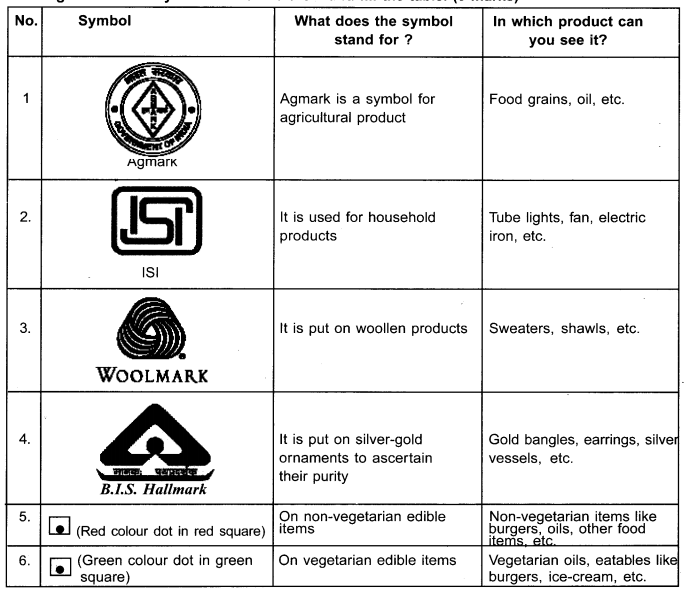
Question 3.
What should be kept in mind while purchasing goods? Fill in the information after observing few wrappers or packing.
Answer:
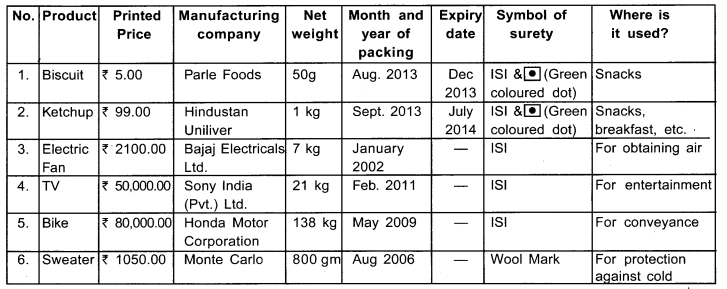
Question 4.
Why do you have to think while buying things mentioned in question 3?
Answer:
If we do not take care about details mentioned for products discussed in question 3, then we may face several problems.
For example, if we eat a food item that is expired, we may fall ill.
Similarly, a product which does not carry ISI mark may be of inferior quality.
Question 5.
Under which circumstances the customers might be dissatisfied with shopkeepers? Customers may not be satisfied by shopkeepers due to following reasons:
Answer:
- Shopkeeper might have sold expired products.
- Shopkeeper might have sold a product not carrying ISI mark.
- Shopkeeper might not listen to customers’ complaints.
- Shopkeeper might have sold underweighted products.
- Shopkeeper might have sold duplicate products.
Question 6.
‘Beware customer Beware! (Jago Grahak Jago). What does the word beware mean? What should the customer beware of? Answer:
Customers should beware of:
- Duplicate products False claims or offers Misleading advertisements
- The government has given certain rights to the customers.
- Under these rights, customers can complain against poor quality products and services.
- The customer can demand compensation and file a case in the court if he is not satisfied.
- In this sense, beware refers to awakening the customer about the rights he holds.
Question 7.
State your responsibilities as a customer.
Answer:
Responsibilities of a customer:
- A customer should always insist on demanding a bill for product/service bought.
- He should buy products having ISI, Agmark, etc. marks.
- He should check the expiry date before buying.
- If the customer is dissatisfied with the product, he should talk to the seller. If he does not get satisfaction, he should go to the consumer forum.
- Customer should decide his will and capacity to purchase. He should not get fascinated unnecessary.
- Customer should see that he gets right weight of product bought.
Question 8.
What are the rights of customer?
Answer:
Rights of a customer:
- Customer has the right to obtain satisfactory return for the money paid.
- Customer has the right to get information about goods, to choose the goods of his choice and also to make complain if he is dissatisfied.
- He has the right to demand bill for the goods or services he has purchased.
Multiple Choice Questions
Question 1.
Which of the following logo will you see on a good quality mixer grinder?
(A) ISI
(B) Agmark
(C) BIS
(D) Woolmark
Answer:
(A) ISI
Question 2.
Gold ornaments have …………………… mark on them.
(A) AIZ
(B) BIS
(C) ISI
(D) Agmark
Answer:
(B) BIS
Question 3.
A motorbike will not have …………………….. mark.
(A) BIS
(B) Agmark
(C) Woolmark
(D) None of these
Answer:
(D) None of these
Question 4.
In the slogan, ‘Jaago Grahak Jaago’ the word ‘Jaago’ means …………………… .
(A) Get up
(B) Stand up
(C) Beware
(D) All of these
Answer:
(C) Beware
Question 5.
A customer should always insist on ………………………….. .
(A) Carry bag
(B) Bill
(C) Home delivery
(D) All of these
Answer:
(B) Bill
Answer in one or two sentence(s)
(Note: Here, answers are given In short for memorizing easily. Students must write full sentences.)
Question 1.
‘Who is a customer?
Answer:
A person who buys or purchases goods.
Question 2.
Which symbol is used for edible items?
Answer:
A symbol made up of green dot enclosed in a green coloured square is used for vegetarian food items whereas a symbol made up of red dot enclosed in red coloured square is used to indicate non-vegetarian food items.
Question 3.
When was the RTI passed?
Answer:
In October 2005.
Question 4.
What is the full form of RTI?
Answer:
Right to Information.
Question 5.
What is RTI?
Answer:
A right is given to each citizen, which enables him to know about the procedures or work going on in government offices.
Question 6.
What does the government do with the tax money?
Answer:
Use it for the welfare of the people.
Question 7.
For which products is the Agmark logo used?
Answer:
Agricultural products.
Question 8.
Which slogan does the government continuously display to the customers?
Answer:
Jaago Grahak Jaago.
Question 9.
State two situations where customers may be dissatisfied with the shopkeeper.
Answer:
If the shopkeeper sells expired or under weighed products.
Question 10.
State two situations where a customer needs to beware.
Answer:
A. Customer needs to beware that shopkeeper does not fool him by selling duplicate products.
B. Customer should beware of misleading advertisements.
Question 11.
State a few responsibilities of a customer.
Answer:
Customers should always buy products with bills, should insist on products with lSl. Agmark. etc. marks, should check expiry of edible goods, etc.
Question 12.
State two rights of the customer.
Answer:
A. Customer has the right to obtain satisfactory return for the money paid.
B. He has the right to buy as per his will and choice.
True or False
Question 1.
All electronic products must have ISI mark.
Answer:
False
Question 2.
A silver bowl will have BIS mark.
Answer:
True
Question 3.
Woolmark is also used for cotton clothes.
Answer:
False
Question 4.
Green dot enclosed in green square is printed on wrappers of non-vegetarian food.
Answer:
False
Question 5.
It is inappropriate to buy medicines without expiry date.
Answer:
True
Question 6.
Buying a product along with its bill is compulsory.
Answer:
False